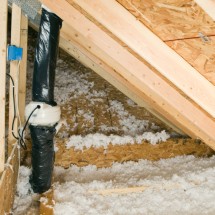Radon Gas Testing & Treatment
What is Radon Gas?
Radon gas is a radioactive, colorless, odorless, tasteless noble gas, occurring naturally as an indirect decay product of uranium or thorium. Radon typically moves up through the ground to the air above and into your home through cracks in the foundation.

Why is Radon Gas Testing Important?
Radon is a cancer inducing radioactive gas that has been found in homes all over the United States. It comes from the natural breakdown of uranium in soil, rock and water and gets into the air you breathe. As the second leading cause of lung cancer, an estimated of 20,000 lung cancer deaths each year are attributed to radon gas exposure.
One Source Environmental quickly detects and stops radon gas exposure in residential and commercial buildings.
How We Can Help
Radon Gas Testing & Treatment
One Source Environmental performs residential and commercial radon testing utilizing the EPA recommended guidelines. Any home can have a radon problem. This means new and old homes, well-sealed and drafty homes, and homes with or without basements. In fact, you and your family are most likely to get your greatest radiation exposure at home. That is where you spend most of your time. Nearly 1 out of every 15 homes in the United States is estimated to have an elevated radon level (4 pCi/L or more).
How Can I Detect Radon?
Without testing, there is no way to tell if you have a Radon problem in your house. The United States Environmental Protection Agency now recommends every building be tested for Radon and re-tested regularly.
EPA estimates that about 21,000 lung cancer deaths each year in the U.S. are radon-related. Exposure to radon is the second leading cause of lung cancer after smoking. Radon is an odorless, tasteless and invisible gas produced by the decay of naturally occurring uranium in soil and water.
What if high levels are found in my home?
While there is no known safe level of radon, due to the fact there is always some risk, the EPA has set 4 picocuries per liter (pCi/L) as the national action level. Homes exceeding that level should be fixed. Homes with levels lower than 4 pCi/l still pose a lesser risk, and in many cases may be reduced.
Length of time to test
Because radon levels vary from day to day and season to season, a short-term test is less likely than a long-term test to tell you your year-round average radon level. However, if you need results quickly, a short-term test may be used to decide whether to fix the home.
The quickest way to test is with short-term tests. Short-term tests remain in your home from two days to 90 days, depending on the device. There are two groups of devices which are more commonly used for short-term testing. One is the passive device group which includes charcoal canisters. This is what One Source Environmental uses for radon testing. Exposure of 48 to 72 hours is typically the length of time our canisters are left in the house to detect radon.
How do I lower the radon level in my home?
There are several proven methods to reduce radon in your home. The primary system used is a vent pipe and fan, which will pull radon from under the home and vent it outside. This system, known as a soil suction radon reduction system, does not require major changes to your home. Sealing foundation cracks and other openings makes this kind of system more effective and cost-efficient. Other methods are also available and will vary based on the design of your home. A professional radon mitigation contractor can provide more details.
